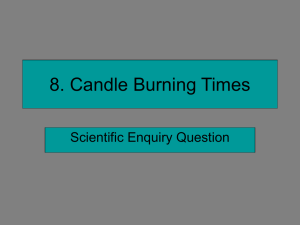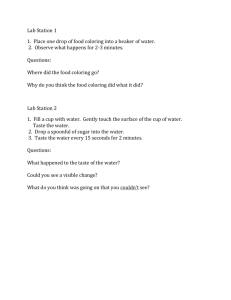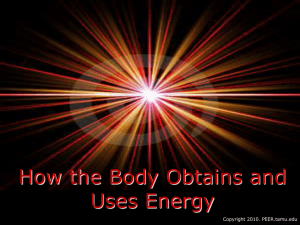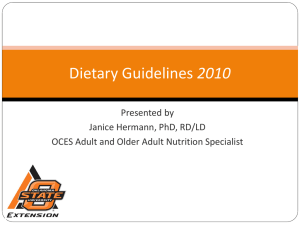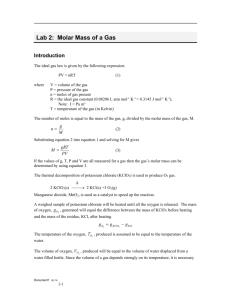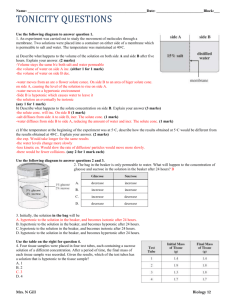WKS1128 - 5 Energy in food Lab
advertisement
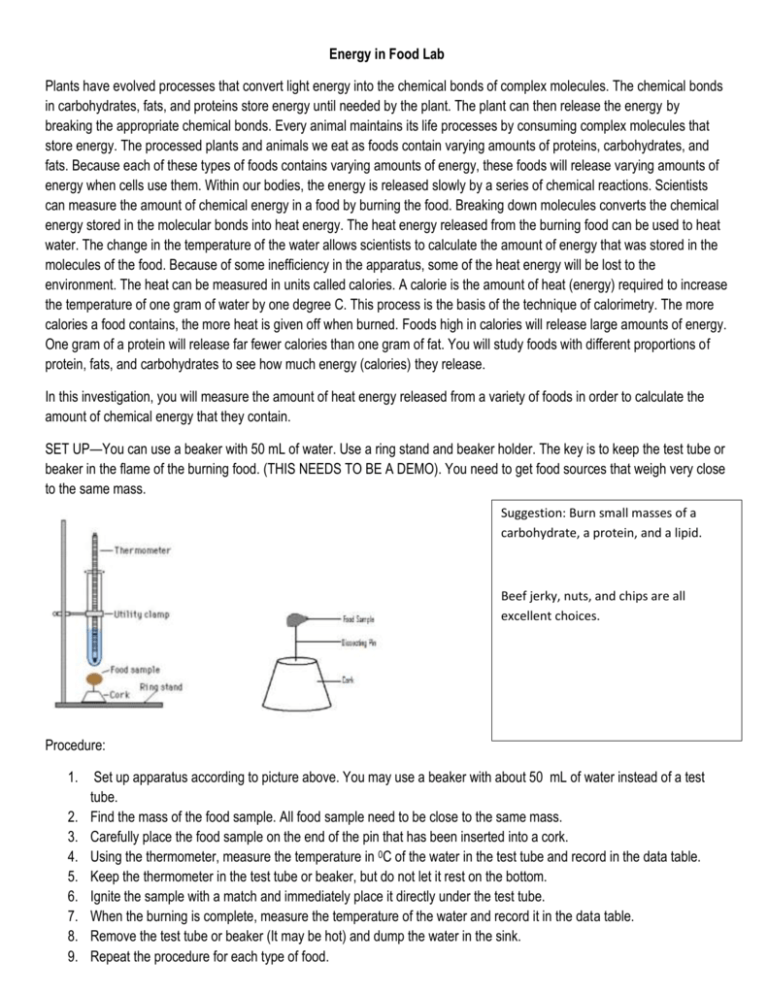
Energy in Food Lab Plants have evolved processes that convert light energy into the chemical bonds of complex molecules. The chemical bonds in carbohydrates, fats, and proteins store energy until needed by the plant. The plant can then release the energy by breaking the appropriate chemical bonds. Every animal maintains its life processes by consuming complex molecules that store energy. The processed plants and animals we eat as foods contain varying amounts of proteins, carbohydrates, and fats. Because each of these types of foods contains varying amounts of energy, these foods will release varying amounts of energy when cells use them. Within our bodies, the energy is released slowly by a series of chemical reactions. Scientists can measure the amount of chemical energy in a food by burning the food. Breaking down molecules converts the chemical energy stored in the molecular bonds into heat energy. The heat energy released from the burning food can be used to heat water. The change in the temperature of the water allows scientists to calculate the amount of energy that was stored in the molecules of the food. Because of some inefficiency in the apparatus, some of the heat energy will be lost to the environment. The heat can be measured in units called calories. A calorie is the amount of heat (energy) required to increase the temperature of one gram of water by one degree C. This process is the basis of the technique of calorimetry. The more calories a food contains, the more heat is given off when burned. Foods high in calories will release large amounts of energy. One gram of a protein will release far fewer calories than one gram of fat. You will study foods with different proportions of protein, fats, and carbohydrates to see how much energy (calories) they release. In this investigation, you will measure the amount of heat energy released from a variety of foods in order to calculate the amount of chemical energy that they contain. SET UP—You can use a beaker with 50 mL of water. Use a ring stand and beaker holder. The key is to keep the test tube or beaker in the flame of the burning food. (THIS NEEDS TO BE A DEMO). You need to get food sources that weigh very close to the same mass. Suggestion: Burn small masses of a carbohydrate, a protein, and a lipid. Beef jerky, nuts, and chips are all excellent choices. Procedure: 1. 2. 3. 4. 5. 6. 7. 8. 9. Set up apparatus according to picture above. You may use a beaker with about 50 mL of water instead of a test tube. Find the mass of the food sample. All food sample need to be close to the same mass. Carefully place the food sample on the end of the pin that has been inserted into a cork. Using the thermometer, measure the temperature in 0C of the water in the test tube and record in the data table. Keep the thermometer in the test tube or beaker, but do not let it rest on the bottom. Ignite the sample with a match and immediately place it directly under the test tube. When the burning is complete, measure the temperature of the water and record it in the data table. Remove the test tube or beaker (It may be hot) and dump the water in the sink. Repeat the procedure for each type of food. Data Table Food 1 2 3 4 5 6 Class of Macromolecule Mass of food sample Initial water temperature Which food sample appeared to burn the longest? Which food sample had the biggest change in water temperature? Which food sample contained the most energy? Where is energy stored in compounds such as glucose? What energy transformations occurred in the food as it was being burned? Why was the mass of the food less after burning? Final water temperature Change in temperature of water.
